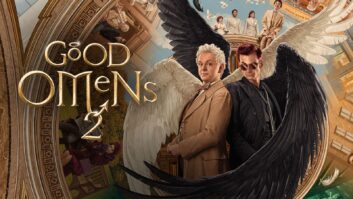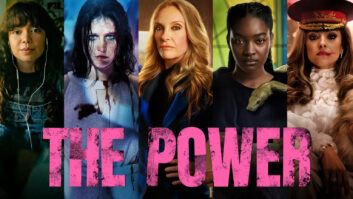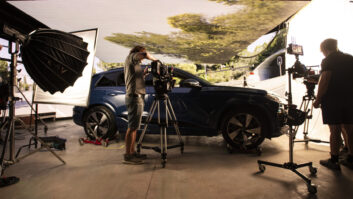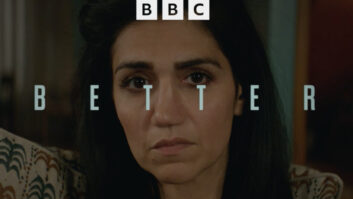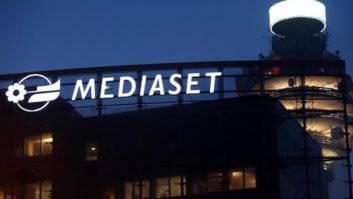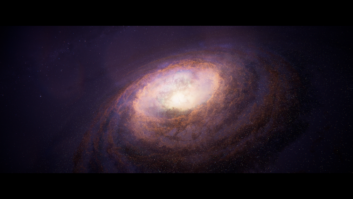 Morgan Freeman’s captivating voice has undeniably etched itself into the collective consciousness, establishing him as one of the most recognisable voices in the realm of entertainment.
Morgan Freeman’s captivating voice has undeniably etched itself into the collective consciousness, establishing him as one of the most recognisable voices in the realm of entertainment.
In the waning months of the past year, the actor, known for his portrayal of God in Bruce Almighty, lent his dulcet tones to the Netflix documentary series Our Universe; a grand narrative 13.8 billion years in the making. He escorts viewers through the intricate tapestry of celestial events and cosmic origins, providing a fresh and awe-inspiring perspective on what can only be described as the ultimate life story: the epic saga of our universe itself.
While Freeman was entrusted with narrating this tale, it was the team at Bristol VFX studio Lux Aeterna, who bore the responsibility of crafting extraordinary and visually stunning sequences that would have been arduous, if not impossible, to capture during the actual filming process.
It is a vital part of the post-production pipeline for many films, television shows, and commercials, contributing significantly to the overall visual storytelling and cinematic experience. Tav Flett, compositing supervisor at Lux Aeterna, explains how the team managed to maintain visual continuity and integrity across different scenes, especially during the compositing phase.
“Having multiple compositors working on a large project is always a challenge to maintain consistency of look and quality, so wherever possible we tried assigning entire sequences to a single compositor,” he says. “In general, we would try to get key shots signed off between the compositing supervisor, the director and the artist so that everyone was happy with the look and visual quality before progressing with the rest of the sequence.”
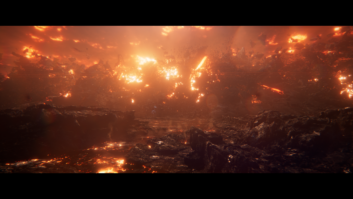 Pre-visualisation also played a part in the compositing process and played a very large role in the finished look of Our Universe. A lot of this started from the concept art. “Freelance concept artist James Ledger worked with Lux Aeterna creative leads and directors to form the overall palette and mood for each sequence which is something leaned heavily on when creating the look of the key shots for each sequence,” Flett continues. “Trying to maintain the feeling of the original boards was key to setting the series-wide tone.”
Pre-visualisation also played a part in the compositing process and played a very large role in the finished look of Our Universe. A lot of this started from the concept art. “Freelance concept artist James Ledger worked with Lux Aeterna creative leads and directors to form the overall palette and mood for each sequence which is something leaned heavily on when creating the look of the key shots for each sequence,” Flett continues. “Trying to maintain the feeling of the original boards was key to setting the series-wide tone.”
What’s more, there were some unexpected discoveries and insights gained during the compositing process that influenced the final visual exploration. However, they weren’t necessarily scientific.
“One of the most pleasant discoveries of working on Our Universe from a compositing perspective was the amount of creative freedom we were given by the BBC directors to develop looks and experiment with scenes,” says Rob Hifle, creative director and co-founder of Lux Aeterna. “This led to some very imaginative sequences, I think the end result speaks for itself.”
Optimising pipelines and continuously learning is key for the team at Lux Aeterna; this is evident given it has a dedicated R&D function backed by the UK Research and Innovation Council and the University of Bristol.
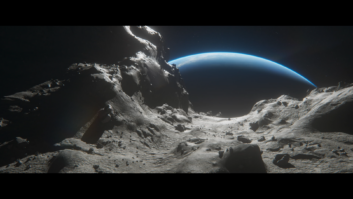 “One workflow that we developed during Our Universe that has since been translated into proceeding projects is the creation of a comprehensive asset library that can be utilised in the composite,” explains Flett. “There are a lot of corners you can cut and time that can be saved by pre-rendering simulations and 3D assets, incorporating 360-degree baked lighting revolves that can be applied to cards and utilised as compositing elements. It gives the compositing artist a lot of control and also keeps scripts light and functional, which is something of utmost importance to an efficient pipeline.”
“One workflow that we developed during Our Universe that has since been translated into proceeding projects is the creation of a comprehensive asset library that can be utilised in the composite,” explains Flett. “There are a lot of corners you can cut and time that can be saved by pre-rendering simulations and 3D assets, incorporating 360-degree baked lighting revolves that can be applied to cards and utilised as compositing elements. It gives the compositing artist a lot of control and also keeps scripts light and functional, which is something of utmost importance to an efficient pipeline.”
Over the course of 18 months, the team at Lux Aeterna delivered over 700 VFX shots for the landmark series; a feat that required teamwork across both production and VFX. Emphasising a commitment to nurturing strong relationships with clients, directors and producers from the outset, Paul Silcox, Lux Aeterna’s VFX director and VFX supervisor for Our Universe says the primary mission was to assist the BBC Studios team in translating its creative visions into captivating narratives on screen, enriched with cutting-edge visual effects. “It really was a collaborative process; Mike Davis (show runner) and the production team at BBC Studios provided invaluable support and encouragement throughout the project and this played a pivotal role in the successful delivery of the VFX,” he adds.
